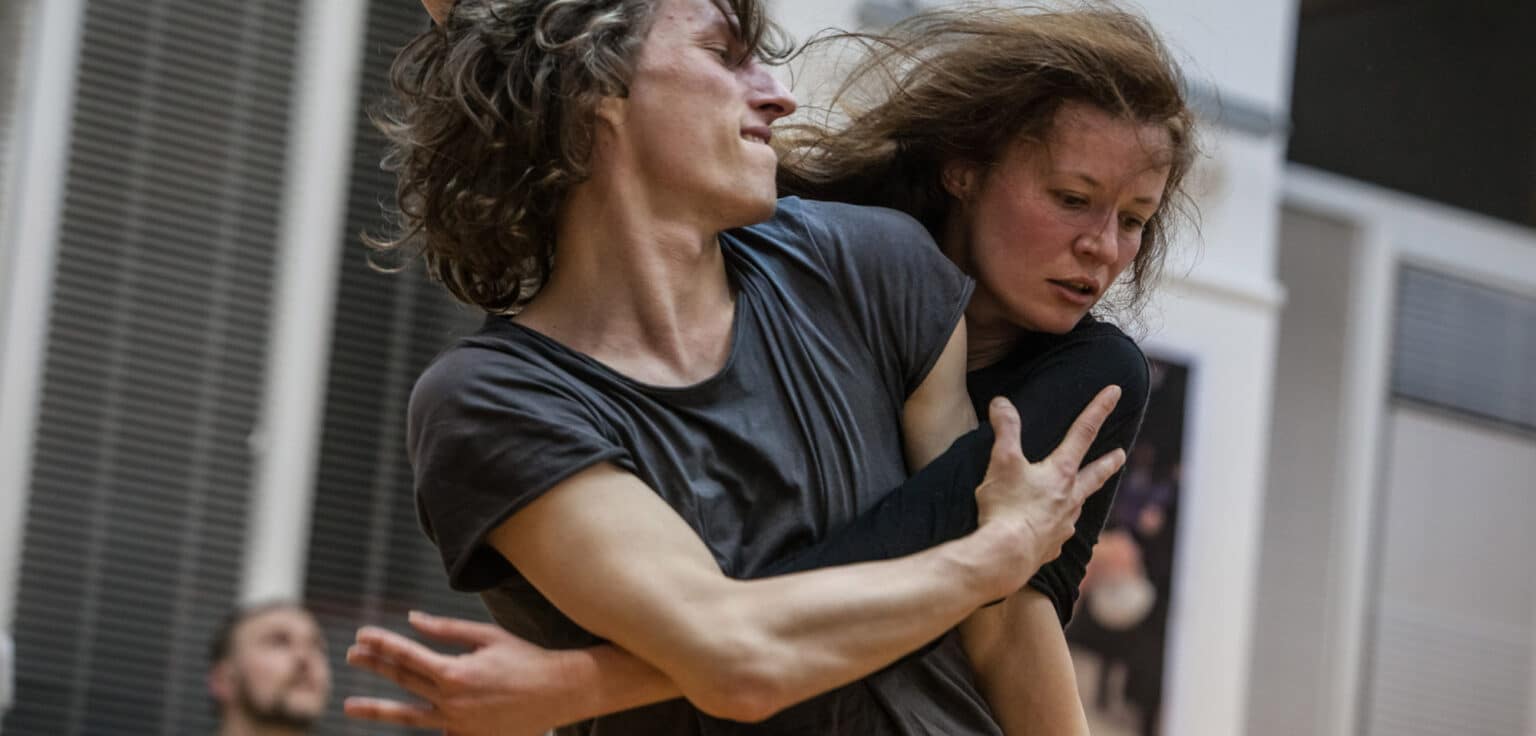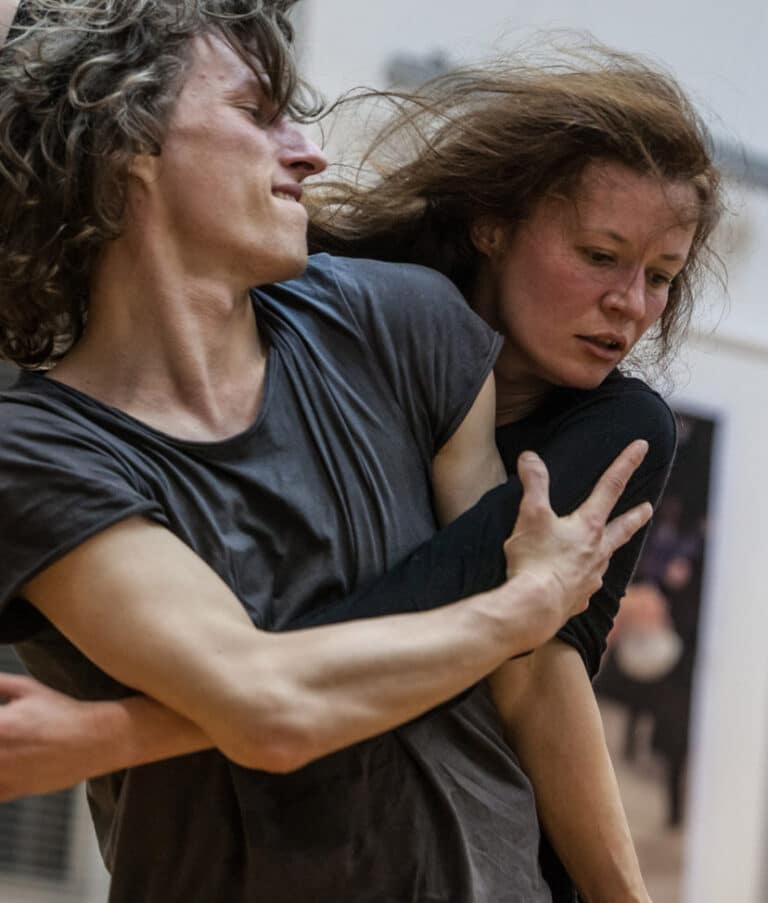Clinical Mental Health Counseling MA
Somatic Counseling: Dance/Movement Theories & Practice Concentration
Gain clinical counseling skills and experience firsthand the healing potential of dance with Naropa’s Somatic Counseling: Dance/Movement Theories & Practice concentration.
About this Concentration
This unique concentration combines dance movement therapy with contemplative practice and clinical mental health counseling. The Dance/Movement Theories & Practice concentration provides students with the theoretical, clinical, and professional skills to be effective counselors grounded in the integration of body, mind, and movement.
In this concentration, you’ll encounter both traditional and innovative dance/movement therapy approaches while exploring self-psychology, the Gestalt-influenced movement cycle, and applied neuroscience. Beyond its academic depth, the master’s program in dance movement therapy offers opportunities for physical, spiritual, and emotional development. You’ll delve deeply into creative methods for client interaction, employing improvisation, rhythm, and metaphor to discover and express your authentic self.
Movement Therapy Certification
Naropa’s Dance/Movement Therapy program is one of only seven dance therapy degrees approved by the American Dance Therapy Association. Naropa’s Somatic Counseling tracks are designed to help students gain the certifications they need for successful careers as dance movement therapists.
Practicum and Internships
Holistic Study
Naropa’s course offerings are designed to create a matrix of learning in which study in each area connects and complements study in other areas. As students concentrate on a particular course, they are prompted by experienced faculty to consider insights and interconnections from other classes.
Quick Facts
- On-campus program
- Deep integration of Clinical Mental Health Counseling interventions for movement and mind/body connection
- One of only seven dance therapy programs approved by the American Dance Therapy Association
- 64 Credit Hours
- 900 hours of Clinical Experience
- 3-year Degree
- Licensure and Certification Support
- Now Accepting Applications for August 2025
Program Format
The MA in Clinical Mental Health Counseling, Somatic Counseling: Dance/Movement Theories & Practice Concentration is a three-year on-campus program that focuses on counseling, the healing potential of the creative experience, and the therapeutic properties of conscious movement sequencing.
Students in the concentration receive robust training in somatic movement therapy’s theoretical aspects. Alongside, they delve into mindfulness practices and accumulate hands-on clinical expertise.
While pursuing your Clinical Mental Health Counseling degree, you’ll understand the essential and dynamic exchange between mind and body as both elements continuously influence one another in a symbiotic relationship.
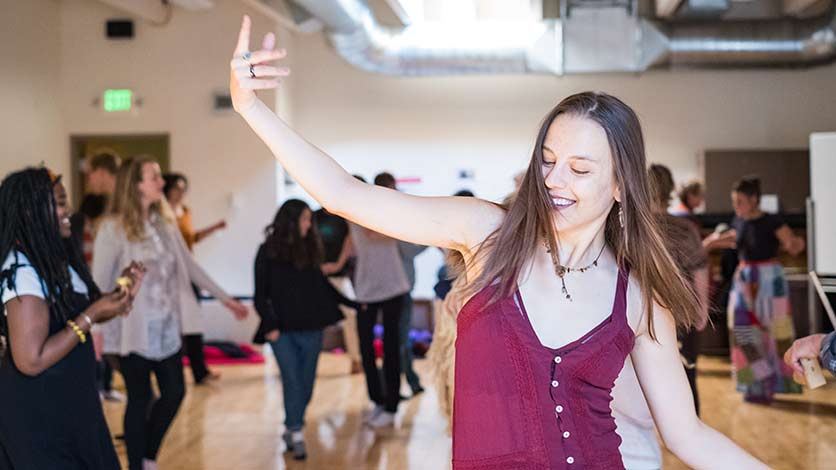
Course Spotlight
Course Spotlight Current Methods & Skills in Psychotherapy
Major current approaches in psychotherapy theory and practice, including Cognitive Behavior Therapy (CBT), Dialectic Behavior Therapy (DBT), and Solution-Focused Therapy, are explored. Students have the opportunity to examine how each of these methods operates independently, as well as how they interface with more traditional approaches. Students also begin to work with these approaches in a way that builds clinical skill development in alignment with a somatic psychotherapy orientation.
Degree
Requirements
The Dance/Movement Theories and Practice Concentration spans 64 credits over three years, emphasizing counseling skills, harnessing the transformative power of creative experiences, and using intentional movement sequencing for therapeutic benefits. The concentration is designed to follow standards for Clinical Mental Health Counseling as well as guidelines from the American Dance Therapy Association (ADTA). The concentration has been an ADTA-approved program since 1987.
Counseling Experiential Requirement:
Each student must participate in a counseling/therapy relationship with a qualified psychotherapist of their choice. A minimum of fifteen 50-minute face-to-face sessions (via telehealth or in person) within the first two years of the program is required. (The term “psychotherapist” is used to be inclusive of licensed providers from a variety of professional mental health backgrounds. The Student Guidebook outlines specific parameters of a qualified psychotherapist.)
Course Schedule
Course Schedule Fall Year 1 (9 credits)
- CMHC 600, Foundations and Orientation of Clinical Mental Health Counseling (3)
- CMHC 601, Social/Multicultural Foundations (3)
- CNSD 617, Foundations of Dance/Movement Therapy in Counseling (2)
- CNSS 646, Contemplative Practices for Somatic Counseling I (1)
Spring Year 1 (11 credits)
- CMHC 603, Counseling and Helping Relationships I (3)
- CMHC 602, Human Growth and Development (3)
- CNSS 658, Applied Anatomy and Neuroscience in Counseling (2)
- CNSS 622, Body/Movement Observation/Assessment (3)
Summer Year 1 (0 Credits)
- Summer Year 1 (Off, 0 Credits)
Fall Year 2 (11 credits)
- CMHC 604, Counseling and Helping Relationships II (3)
- CMHC 605, Group Counseling (3)
- CMHC 606, Legal and Ethical Aspects of Counseling (3)
- CNSD 716, Specialized Approaches in Dance/Movement Therapy (2)
Spring Year 2 (12 credits)
- CNSS 663, Family Systems (3)
- CNSS 606, Advanced Counseling Skills (3)
- CMHC 607, Diagnosis and Treatment Planning (3)
- CMHC 620, Counseling Practicum (3)
Summer Year 2 (7 credits)
- CMHC 609, Research & Program Evaluation (3)
- CMHC 608, Assessment (3)
- CNSD 621, Extended Practicum (Dance/Movement Approaches in Counseling) (1)
Fall Year 3 (7 credits)
- CMHC 622 Internship I (3)
- CNSS 664 Crisis, Trauma & Disaster Counseling (3)
- CMHC 615 Capstone (1)
Winter Intersession Year 3 (0 credits)
- CMHC 623, Winter Intersession Internship (0)
Spring Year 3 (7 credits)
- CMHC 624, Internship II (3)
- CMHC 610, Career Development (3)
- CMHC 616, Capstone II (1)
Total: 64 Credits
Why Choose Naropa?
Contemplative Approach
Naropa’s curriculum emphasizes mindfulness and moving meditation as well as diversity and community engagement. Naropa’s Somatic Counseling programs will help transform you into a deeply aware therapist who is passionate about helping others create change in their bodies, minds, and lives, by first working with yourself.
Diversity & Inclusion
Naropa University is dedicated to embracing diversity and inclusive education. This is crucial for understanding and showcasing qualities that bring people together, aiming for a fair and united society.
Community-Based Learning
Through internship experiences, students become acquainted with different populations as they observe and participate in the community. This hands-on learning offers them the opportunity to act as professionals in training, gaining invaluable real-world experience and skills.

How this Program Prepares You
Clinical Experience
Your second year in the Dance/Movement Therapy program begins with supervision and mentoring during a 200-hour practicum. You’ll then begin your 700-hour internship journey in your third year, participating in collaborative team meetings and receiving clinical supervision as you lead dance therapy sessions and groups.
Movement Therapy Certification
Upon graduation, students in the dance/movement therapy concentration will have fulfilled the requirements for the American Dance Therapy Association’s initial registration as a Registered Dance Movement Therapist (R-DMT). Program graduates can apply for the R-DMT credential as soon as their degree is completed.
Diverse Learning
Graduate students in the dance therapy program gain a strong theoretical grounding in somatic movement therapy. Additionally, they engage in mindfulness practices and accumulate extensive clinical exposure. The ultimate goal is for each of our graduates to become self-aware, compassionate therapists who nurture mind-body synchronization.
Learning Outcomes
Critical Scholarship and Integration: Students will effectively research and write on Dance/Movement Therapy (DMT) and Body Psychotherapy (BP), integrating theory with clinical practice while demonstrating critical thinking and academic rigor.
Clinical Intervention Proficiency: Students will develop and apply effective counseling and DMT/BP interventions tailored to client needs, ensuring a compassionate and evidence-based approach in their therapeutic practice.
Professional Ethics and Standards: Students will adhere to professional ethics, self-regulate, accept supervision, and address power dynamics within therapy and institutional settings.
Cultural Competency and Pluralism: Students will embrace multicultural competency, recognizing and valuing diverse body experiences and movement patterns in their practice.
Embodied Awareness: Students will develop continuous awareness of their bodily sensations, emotions, and thoughts, enhancing their therapeutic presence.
Career Opportunities for Somatic Counseling: Dance/Movement Theories & Practice
Upon completing the master’s degree in somatic counseling: dance/movement therapy, our graduates pursue careers as individual and family therapists, program coordinators, dance therapists, and beyond. Regardless of your career path, the solid foundation from your clinical internship will empower you to serve with compassion and mindfulness.
- Dance Therapist: Employ dance movement therapy to improve well-being.
- Expressive Arts Therapist: Use art to aid emotional exploration and healing.
- Mental Health Counselor: Provide therapeutic support for emotional well-being.
- Substance Abuse Counselor: Aid in addiction recovery.
- Behavioral Disorder Counselor: Assist with behavioral challenges.
Discover Career Pathways for Somatic Counseling: Dance/Movement Theories & Practice
Hear from a Graduate
FAQS about the
Somatic Counseling: Dance/Movement Theories & Practice
Can I obtain official licensure as a dance and movement therapist with this degree?
Although there is no official licensure for dance/movement therapists, graduates from our program are eligible to apply to be registered Dance Movement Therapists and use the credential R-DMT. They will be eligible post-grad to pursue the highest level of certification with the ADTA, BC-DMT or Board Certified Dance Movement Therapist.
Do I need formal dance training to study dance/movement therapy?
Yes, you need formal dance training to study dance/movement therapy. Applicants need expertise in at least two different dance (or movement) forms; in-depth and dedicated experience in a minimum of one dance form; and exposure to composition, choreography, performance, and dance history.
How is dance/movement therapy different from other forms of somatic healing?
Dance/movement therapy is different from other somatic healing forms by emphasizing movement and dance as core therapeutic tools. Unlike approaches focusing solely on touch or body awareness, Dance Movement Therapy uses expressive movement to address emotional, cognitive, and physical integration. Practitioners interpret nonverbal cues through dance, promoting self-awareness and emotional healing in a unique therapeutic context.
What makes Naropa’s Dance/Movement Therapy unique?
Naropa’s Dance/Movement Therapy stands out due to its integration of contemplative practices with therapeutic techniques. The program emphasizes a holistic approach, combining dance and movement therapy with mindfulness and self-awareness practices rooted in contemplative education. Moreover, Naropa’s clinical internship experience will serve as a strong foundation for graduates, as well as the opportunity to fulfill the requirements for the American Dance Therapy Association’s initial registration as a Registered Dance Movement Therapist (R-DMT).
Learn More About the Program
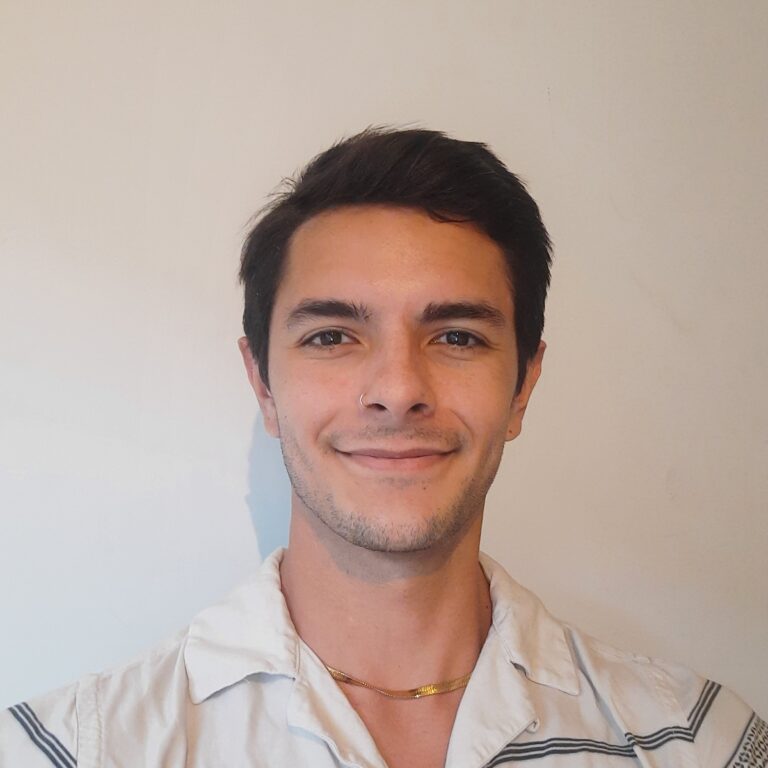
Connect
with your counselor
Matt Rivera
Graduate Admissions Counselor
Ready to Apply?
Admission Requirements
At Naropa, we value both academic excellence and the willingness to carry out introspective work. Learn more about admission requirements and the application process for the Somatic Counseling: Dance/Movement Theories & Practice Concentration.
Graduate Students
In addition to an undergraduate degree, this concentration requires dance experience, including expertise in at least two different dance (or movement) forms, in-depth and dedicated experience in a minimum of one dance form, and exposure to composition, choreography, performance, and dance history. Additionally, coursework requirements include 3 credits of Intro to Psychology and 3 credits of Abnormal Psychology or Theories of Personality.
To apply, submit an online application and the following documents:
- Transcripts from any institutions where undergraduate coursework was completed.
- A detailed statement of interest
- Resume/CV that covers pertinent academic, employment, and volunteer history (including exact dates of participation)
- Two letters of recommendation
Qualifying applicants will be contacted for an interview day. Take a look at the complete list of admission requirements.
International Students
Costs and Financial Aid
Scholarships are a great way to help with the costs of going to school. Naropa University offers an array of scholarship opportunities to graduate students. Students may be eligible to receive scholarships through their admissions application, by applying for scholarships, or by being nominated for a scholarship. For more detailed information about the different scholarships available and how to receive them, please review our graduate scholarship page.
Graduate Scholarship Opportunities
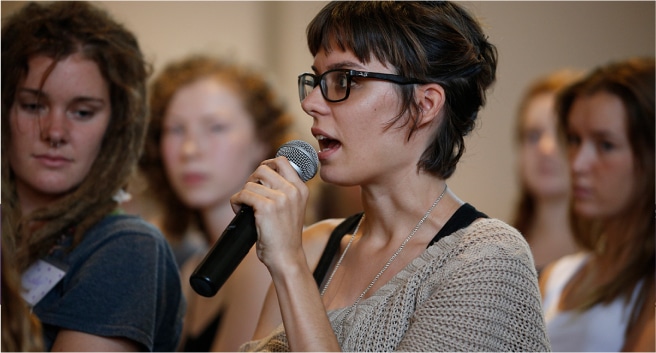
Interested in Somatic Counseling: Dance/Movement Theories & Practice?
Read our blog or listen to our podcast!
Episode 95. Valeria McCarroll, PhD: Somadelics
Mindful U Podcast 95. Valeria McCarroll, PhD: Somadelics, Pursuing Life with Psychedelic Support & Intentional Integration This episode of our podcast is available at Mindful U, Apple, Spotify, and Stitcher now! We are happy to have...
